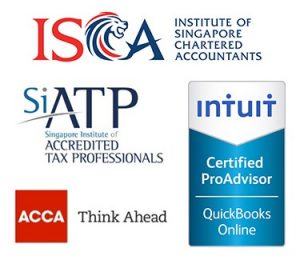Signs of End Phase Lung High Blood Pressure
Lung high blood pressure is a modern and also deadly problem that affects the pulmonary arteries, which are the capillary that bring oxygen-poor blood from the heart to the lungs. When these arteries become tightened, obstructed, or harmed, it puts pressure on the heart and brings about numerous symptoms. In the advanced phases of pulmonary high blood pressure, referred to as end phase, the signs come to be extra severe and can greatly impact a person’s lifestyle. This short article will review the major signs of end stage pulmonary high blood pressure and offer valuable understandings for those impacted by this condition.
It is important to note that the signs of end phase lung hypertension may differ from one person to another, and also not all people will certainly experience the same signs or to the same degree. However, there are some common signs and symptoms that are frequently observed in clients with end phase pulmonary hypertension.
1. Serious Lack of Breath
Among the characteristic symptoms of end phase pulmonary hypertension is extreme lack of breath, likewise referred to as dyspnea. This sign might happen also at rest, making basic everyday tasks like walking or climbing up stairs extremely challenging. The lowered ability to take a breath properly triggers a feeling of suffocation and can be distressing for the person.
In addition to lack of breath, individuals may experience fast breathing, difficulty catching their breath, and also a feeling of tightness in the upper body. These signs take place because of the tightened lung arteries, which limit the circulation of oxygen-rich blood to the lungs.
2. Fatigue and Weak point
End phase lung high blood pressure can likewise cause disabling tiredness and weakness. As the heart works harder to pump blood through the tightened arteries, it becomes stretched and less efficient. This leads to minimized oxygen as well as nutrient supply to the body, resulting in tiredness and also a constant sensation of weak point.
People may find it testing to take part in exercises or perhaps do simple jobs without really feeling worn down. The fatigue can be overwhelming and also might continue despite appropriate depanten salbe rest, influencing the individual’s capability to accomplish their everyday regimens.
It is very important for people with end phase pulmonary hypertension to save power and avoid activities that might better intensify fatigue.
3. Breast Pain or Pressure
Breast discomfort or stress is an additional common signs and symptom experienced by those in the long run phase of lung high blood pressure. The limited blood flow with the lung arteries can trigger a buildup of pressure in the chest, resulting in pain or discomfort.
The breast pain may be sharp, stabbing, or plain, as well as can be misinterpreted for various other problems such as a cardiovascular disease. It typically aggravates with physical exertion or when resting, and may be come with by lack of breath or a feeling of thickness in the chest.
Individuals experiencing breast pain or stress should seek immediate clinical focus to eliminate any kind of major cardiac concerns.
4. Swelling in the Legs, Ankles, and also Feet
As pulmonary hypertension proceeds to its end phase, the raised stress in the pulmonary arteries can create fluid to build up in the reduced extremities. This leads to swelling, or edema, in the legs, ankle joints, and feet.
The swelling is usually more famous at the end of the day as well as might intensify with prolonged standing or sitting. It can trigger pain, discomfort, and also difficulty in putting on shoes. In serious cases, the swelling might include the abdomen and also other parts of the body.
Taking care of the swelling often involves lifestyle alterations ottomax + such as boosting the legs, using compression stockings, and monitoring fluid intake.
5. Fainting or Faintness
Individuals with end stage lung high blood pressure may experience episodes of fainting or impaired thinking, known as syncope. The reduced oxygen supply to the mind and also the strain on the heart can cause short-term loss of consciousness.
Syncope episodes can be activated by physical exertion, emotional tension, and even unexpected adjustments ready. It is critical for individuals experiencing fainting or faintness to look for medical attention to establish the underlying reason as well as get ideal treatment.
- Dizziness or feeling lightheaded
- Swelling in the abdomen
- Bluish lips or skin
- Irregular or quick heartbeat
- Decreased appetite and also unplanned weight management
- Constant coughing or wheezing
- Difficulty sleeping
It is necessary to bear in mind that these signs are not unique to finish stage pulmonary high blood pressure, and also they can be present in other conditions as well. However, if you or somebody you understand experiences these signs and symptoms, particularly in combination, it is necessary to get in touch with a medical care professional for an exact diagnosis as well as proper management.
To conclude
End phase pulmonary high blood pressure is a significant problem that calls for punctual clinical attention. The symptoms can substantially influence the lifestyle as well as need to not be disregarded. If you or a loved one has been diagnosed with pulmonary hypertension, checking signs and sticking to the therapy plan laid out by medical care experts is important. By identifying and resolving the signs and symptoms in the early stages, individuals can work towards managing the problem as well as enhancing their overall wellness.
Keep in mind, this write-up is for useful purposes only and also ought to not replace specialist medical suggestions. Seek advice from a medical care specialist for accurate medical diagnosis and also personalized therapy choices.


About the author